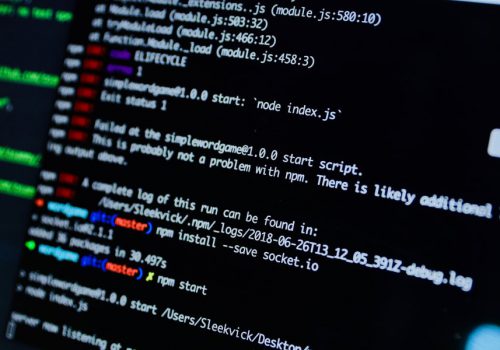Artificial Intelligence (AI) continues to be one of the most discussed topics in the industry of information security, and its impact has been changing cybersecurity for some time now.
As technology becomes more advanced every day, so do cyber-attacks. Cybercriminals are using sophisticated and innovative tools to attack organizations or individuals.
Organizations are increasing their dependency on connectivity, which in a way represents a serious challenge.
People alone are not enough protection to these sophisticated attacks. That is why AI is seen as a potential solution for a better protection. Unfortunately, the potential misuse of AI is cause for concern, as well.
What is artificial intelligence?
AI as a branch of computer science, is the process and the capability that enables systems or machines to learn from experience, and apply that knowledge to perform tasks that would typically be performed by humans.
AI collects data and analyzes them in order to improve its performance. AI can be manifested in a variety of forms and is used in different industries, for example; manufacturing robots, healthcare, self-driving cars, smart assistants, social media monitoring, marketing, etc.
BMC states that there are known to be four types of AI. These types are based on Maslov’s hierarchy of needs and are ranked based on their function, from most basic to most advanced, as follows:
- Reactive machines – The simplest level of AI that performs basic operations like reacting to input with output, without any learning involved.
- Limited memory – Represents the ability of AI to store data and predictions.
- Theory of mind – Refers to the capacity of AI to learn and interact with humans’ thoughts and emotions. This type of AI is only on the beginning phase and it can be seen in self-driving cars.
- Self-aware – Even though this concept only exists in theory, it is predicted that perhaps in the future AI will have the capability to achieve self-awareness.
AI can operate in three ways: assisted intelligence, augmented intelligence, and autonomous intelligence.
How is artificial intelligence applied to cybersecurity?
The rapid growth in advancement and spread of cyber threats is making some forms of cybersecurity protection ineffective, that is why cybersecurity should adopt and upgrade new AI technologies in order to provide better protection, mitigate risks, and stay ahead of cybercriminals.
Organizations use AI in cybersecurity for three main reasons: detection, prediction, and response. Powerful tools of AI are used to detect irregularities and cyber threats in data traffic. Alongside detection purposes, AI is also used to predict cyber threats based on data scanning, vulnerabilities identification, and system training. Furthermore, AI can be used to automatically respond to any attack detected.
Many organizations use AI as a tool to detect cyber threats which is made possible by using machine learning and deep learning to detect irregularities. Furthermore, by scanning data, AI can make predictions, such as predicting cyber threats, which is the main reason organizations use AI as a tool. Lastly, besides detection and prediction, organizations use AI to respond to cyber threats.
Considering the rapid changes on one side, and the potential risks on the other side, demands for advanced cybersecurity tools are increasing significantly. In fact, Meticulous Research reports that AI is expected to reach $66.22 billion in the cybersecurity market, reaching a Compound Annual Growth Rate (CAGR) of 24.2%, from 2022 to 2029.
In terms of AI application and adoption not all sectors reach the same level of advancement. The most advanced sectors are those in the industry of information technology and telecommunication.

The impact of artificial intelligence on cybersecurity
‘A double-edged sword’ is an often-used term to explain the co-existing of AI benefits and its risks in cybersecurity. Trusting AI can improve cybersecurity but can also create greater opportunities for new forms of attacks on AI itself, facilitating severe threats on cybersecurity.
Benefits of artificial intelligence in cybersecurity
Applying AI in cybersecurity offers a large number of benefits. Some of these benefits are listed below:
1. AI processes large data
Organizations are part of many networks and the amount of data that they collect and manage during many activities is enormous. It is almost impossible for personnel themselves to monitor the network traffic alone, which is when AI comes in handy, as it is capable of processing and analyzing large amounts of data thoroughly.
2. AI identifies and detects threats
Millions and millions of threats or attacks are launched every year by cybercriminals. The large amount of risks and the sophisticated forms of cyber-attack require advanced forms of protection which can be provided by AI through machine learning and advanced algorithms. Besides intentional attacks from cybercriminals, a serious challenge is also human error and negligence.
3. Better vulnerability management
AI can help systems identify, assess, prioritize, and address weaknesses. AI can analyze and assess the existing security measures and help improve them.
4. AI improves detection and response time
By integrating AI within cybersecurity, attacks can be detected in real-time and the system can respond to the attack immediately. Early detection and fast response can prevent damages. Furthermore, AI analysis can help a system predict possible breaches.
5. AI secures authentication
Tools like facial recognition, CAPTCHA, and fingerprint scanners are used to collect data for identification offering a protection from illegitimate access.
6. AI provides consistent protection
AI functions all the time, it offers protection 24 hours a day, every day of the week. Attacks can be launched during different times of the day, therefore, a 24/7 protection system is essential.
Challenges of applying intelligence in cybersecurity
Unfortunately, applications of AI in cybersecurity come with their own limitations and challenges. Such examples include the misuse of AI by cybercriminals and adoption barriers.
AI can be misused by criminals for harmful purposes. In such cases, all the potential and the many features of AI that are usually used for good purposes, will be used as powerful attacking tools.
Criminals can find ways to manipulate tasks operated by AI and access them. Taking into account how much information AI processes and collects, accessing them can have catastrophic consequences on privacy and security.
Adoption barriers represent another limitation of AI. The cost of implementation for many organizations is unaffordable, however, the cost of implementation is not the only problem. To adopt AI, many factors must be considered including here talented personnel, as lack of talent is one of the most important obstacles when it comes to AI adaptation.









